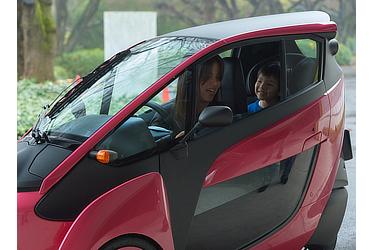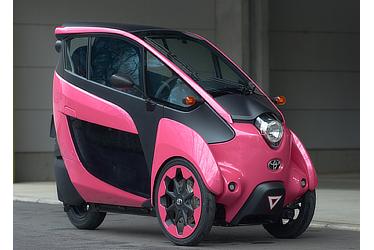Nov. 20, 2015
Toyota Adds Two-seater Model to i-Road Trials in Japan
Tokyo, Japan, November 20, 2015―Toyota will begin Japan-based trials of a two-seater version of the i-Road, its short-range ultra-compact electric vehicle. The trials will be conducted as a part of the Open Road Project launched in July, and will start on November 21 in Tokyo's Shibuya Ward.
While currently in use as part of a Toyota test project in Grenoble, France, the two-seater model has now received type certification from the Ministry of Land, Infrastructure, Transport and Tourism, making it eligible for use in Japan.
The vehicles will be loaned for periods of approximately one month to users who plan to use them for two-passenger applications. By testing the vehicles in a variety of day-to-day situations such as commuting, shopping, and dropping off and picking up children, Toyota will assess the value of the i-Road in different capacities, including its potential to meet mobility needs that are not currently met.
In order to meet the Japanese government's type certification requirements, some aspects of the one-occupant vehicle were modified to make two-occupant use viable. These modifications included changes to reflectors and vehicle-width indicators, and the addition of an Approaching Vehicle Audible System.
The municipal government of Tokyo's Shibuya Ward has expressed interest in the convenience of the i-Road, and will conduct the trials with Toyota in an effort to study the possibility of community-based development for the future.
A summary of the trial is as follows.
-
- Trial start
- November 21, 2015
-
- Trial area
- Shibuya Ward (operation on highways and automobile-only roads is not permitted)
-
- Number of vehicles
- 4 vehicles
-
- Users
- Open Road Project test drivers who live in Shibuya Ward and are expected to use the i-Road for two-passenger outings; Shibuya Ward government employees
Through this project, Toyota will seek to develop various products and services that build on the strengths of the i-Road.
Test driver applications are being accepted, and information on planning and development of products and services will be released on the Open Road Project's website (http://www.openroad-project.com/).
|
|
|---|---|
|
Approximately one year starting in July 2015 and ending in June 2016 |
|
Primarily Shibuya and Minato Wards |
|
10 vehicles (starting on November 21, six one-seater vehicles and four two-seater vehicles) |
|
General consumers (living in central Tokyo) as well as experts and creators. Toyota sought to recruit approximately 100 test drivers over the course of the year but as of the end of October, some 2,600 people have applied. |
|
|









